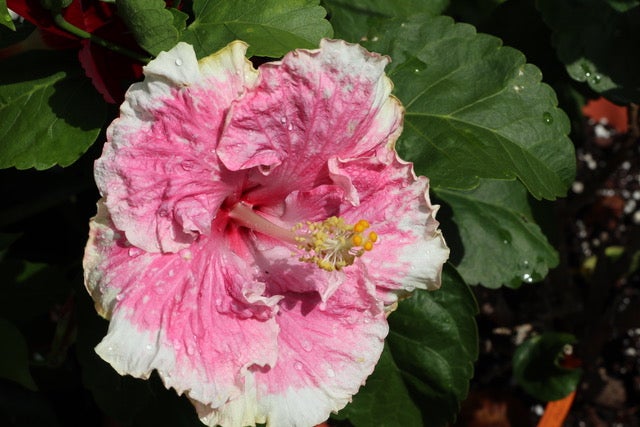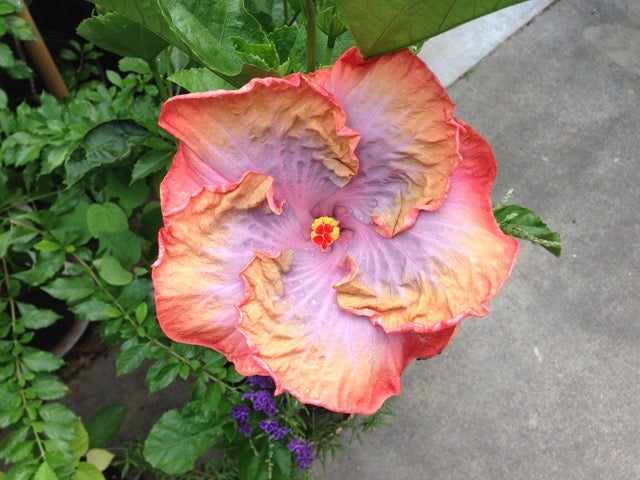Master Gardeners: Causes of yellow leaves on Hibiscus
Published 12:33 am Saturday, May 15, 2021
|
Getting your Trinity Audio player ready...
|
Now summer is almost upon us, many of you have already purchased your tropical hibiscus. They are one of my favorite plants with such neat flowers. Some of the colors you can find are like they were out of a child’s crayon box all mixed up. Then a lot of you like me, have brought them back outside from our greenhouse, garage or wherever you stored them for the winter.
Now they are outside in the glorious sun, they are starting to bloom their beautiful blooms, but you are starting to see yellow leaves on your plants and are wondering what is wrong and what to do. Unfortunately, figuring out the cause of the yellowing leaves requires a bit of detective work, because it can come from lots of different causes. Here are some things to check on your hibiscus:
- Water:Too much or too little water is a primary cause of yellowing hibiscus leaves. Tropical hibiscus need lots of water, but they don’t like to be soggy. Water more often (even daily) during heat waves, and less when it’s cool or overcast. Make sure the plant doesn’t sit in water and that the soil isn’t constantly wet. Use a moisture meter to determine if they need water or not so you don’t overwater.
- Soil:Soil compaction, poor drainage, or lack of soil (becoming rootbound) are other causes of leaf yellowing in hibiscus, often because they contribute to water issues. Check the soil pH and keep it slightly on the acidic side. Gently probe the soil around your plant, or lift it out of the pot, to see if the roots are packed and circling. If your hibiscus needs repotting, use a light, well-draining potting mix or soilless medium. Don’t plant in too big a pot, as hibiscus like to be just a wee bit crowded.
- Temperature Changes:Moving your hibiscus, bringing it indoors, and normal weather changes (including wind) can cause temporary stress. Hibiscus need temperatures in the upper 60s to low 80s F. Exposure to extreme temperatures or drafts can cause the leaves to drop. If you’re growing your hibiscus indoors, keep it away from heat and air vents and drafty windows.
- Light:Hibiscus are full-sun plants. Lack of sunlight can cause overall yellowing of the leaves. On the other hand, if the plant is getting sunburned, the leaves can get yellow or white splotches. 6-8 hours of direct sun per day is enough for hibiscus plants.
- Insect Infestation:Spider mites and aphids are two major pests of hibiscus that can cause leaf damage and discoloration. Look for spider mites on the underside of leaves, and aphids clustering near the tips.
- Nutrition Problems:Overfertilizing is another common cause of leaf yellowing in hibiscus, because of the shock it causes to the plant. Feed plants lightly and regularly with an organic fertilizer, rather than heavily. Extremely poor soil can also cause hibiscus leaf yellowing due to nutrient deficiency. If the leaves are turning yellow with green veins, a condition called chlorosis, it’s a sign of nutrient (usually mineral) deficiency. The lack of iron is one of the major causes of chlorosis along with Manganese or zinc. To tell the difference between these deficiencies is check what foliage turned chlorotic first. Iron chlorosis starts on the younger or terminal leaves and later works inward to the older leaves. However, manganese and zinc deficiencies develop on the inner or the older leaves first and then progress outward. Plants need iron for the formation of chlorophyll as that is what gives plants their green color. Maintain a pH level between 6 and 7 per the American Hibiscus Society. Supplementing water with a weak vinegar solution to lower the pH. Mix 1 cup of vinegar to 1 gallon of water. Always test the pH before doing this or you could eventually harm your hibiscus.
- Chemical Shock:Pesticides can also cause leaf yellowing in hibiscus, especially if applied too heavily or during the heat of the day. Use organic pest control products, such as insecticidal soaps, and follow package instructions exactly.
- Dormancy:Tropical hibiscus often goes through a dormancy stage during the winter. When you bring your plant indoors in the fall, it will likely lose some leaves due to the seasonal and environmental changes.df
How to Care for Hibiscus
Once you’ve sleuthed out the cause of the problem, here are some tips for getting your plant back on track:
- Correct Problem:It probably goes without saying, but the first thing to do is change the conditions causing the problem! Water, repot, move, or protect your hibiscus plant to keep the growing conditions as stable as possible.
- Pruning:Once you’ve corrected the problem, your hibiscus plant should begin to sprout new leaves, but you may want to trim back bare branches to reduce water and nutrient needs as your plant recovers.
- Be Patient:Plant problems can be difficult to diagnose and often take trial and error to correct. Once you hit upon the right solution, your hibiscus plant should recover nicely.
Today’s information is from https://todayshomeowner.com/problem-with-tropical-hibiscus-leaves-turning-yellow/
Remember you can call our Hot Line Tuesdays and Thursdays from 10 a.m. – 2 p.m. to have your questions answered. You can also send an email to ocmg1990@gmail.com or post on our Facebook page Orange County Texas Master Gardeners.
If you are interested in joining the Orange County Master Gardeners, we have online classes ongoing for training. In person classes are still on hold at the current time. Please check our website https://txmg.org/orange for more information.








